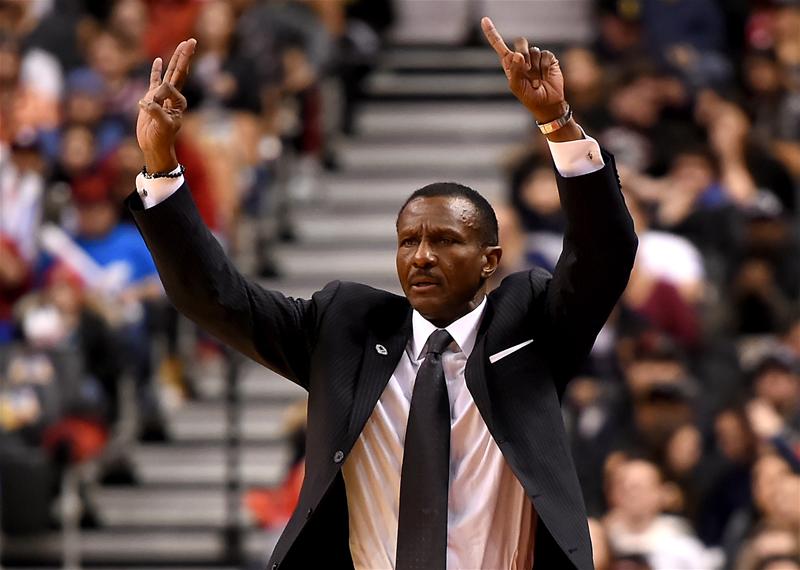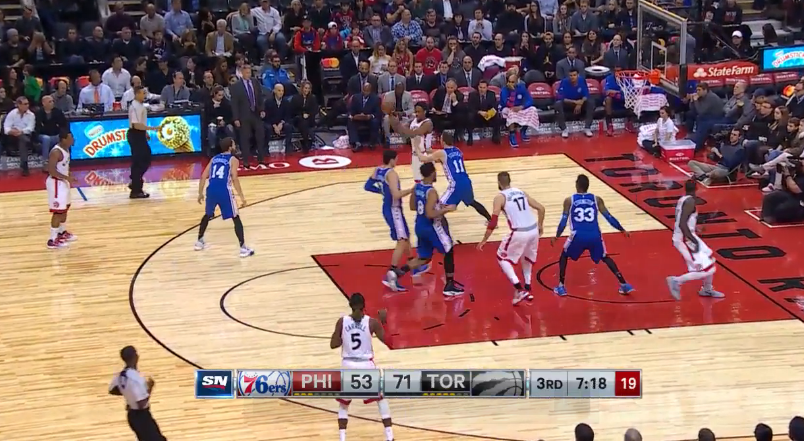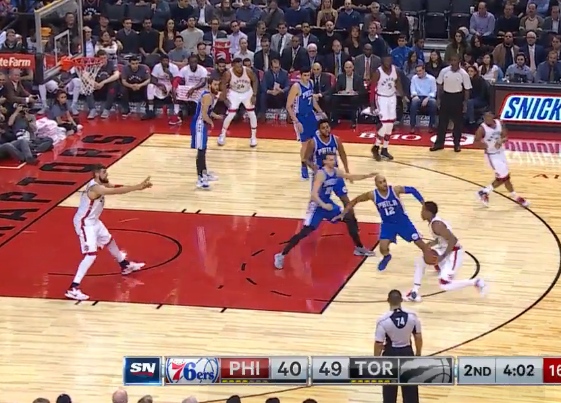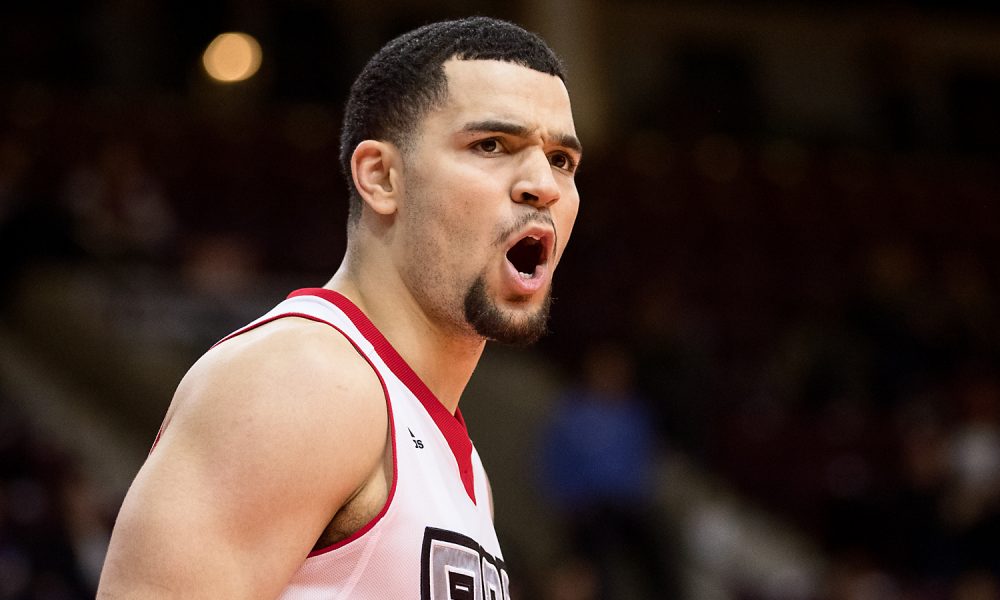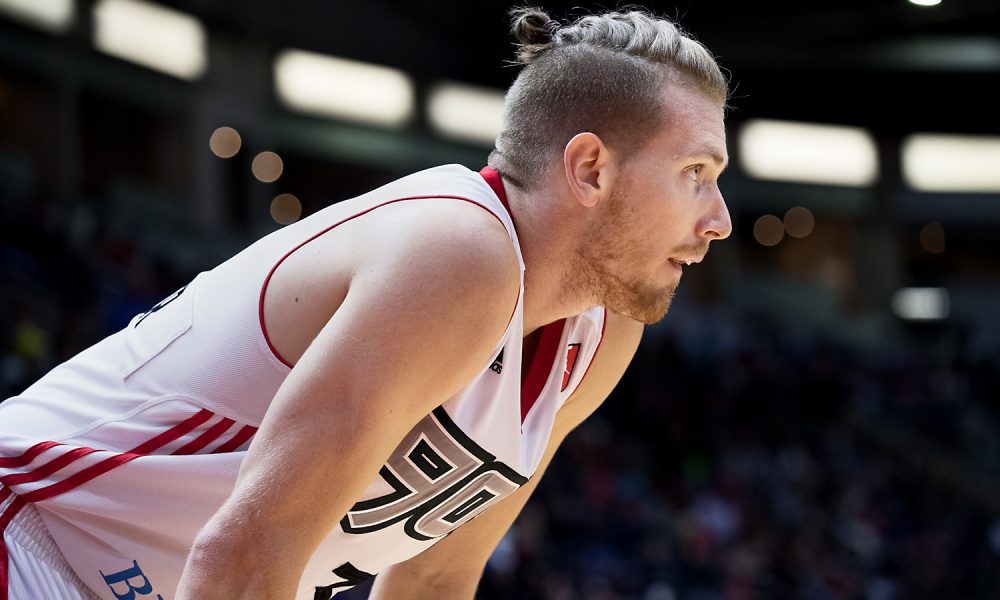Following Monday’s victory against the Philadelphia 76ers, Toronto Raptors head coach Dwane Casey was unusually forthcoming with tactical information about how his team approached their opponent, and about how he read their opponent game-planning for them. For the most part, it’s difficult to get coaches to talk too specifically about in-game strategy and game-planning, with my questions generally met with a smile and a joking “You don’t expect me to actually tell you, do you?” kind of response. Perhaps it was the blowout win, or maybe Casey was just open to throwing out inside terms because these are trends that have been happening for weeks now, anyway, and a discerning eye may have picked up on.
Whatever the case, Casey made mention of three different things I wanted to take a closer look at.
Ross & Post-Ups
In talking about Terrence Ross’ strong, consistent play this year (no, seriously, it’s happening), Casey pointed to defensive attention to detail over Ross’ obvious scoring prowess. What stood out most to the coach was Ross’ ability to help from the wing or corner on post-ups.
Here’s Casey (emphasis mine):
Consistency’s been huge for him. I know he got 22 points, but I think the most important thing is just his defensive focus. I liked the way he was moving his feet. We had some base-gos, base traps a few times, and he got down there and got the baseline cut off. Those are the things I look at. We can score. 122 points. We can score. We’re gonna make shots. But my thing is, to get where we wanna go, we gotta make sure we have focus and attention on the defensive end.
Terminology varies, so the Raptors may have specific wrinkles to what Casey is calling a base-go or a base trap, but in general for them, that involves sending a double to the block and zoning up the weak side behind it. Depending on the opponent’s spacing, that might require Ross to be the double-teamer, or the player zoned up between a second post player and a shooter (or two shooters) on the opposite side in the event of a kick-out and swing.
Ross has great hands, and his quickness allows him to dart in to show double and recover back outside as required. The results are pretty striking at the individual level – Ross is averaging over a steal per-game, swiping 2.8 percent of opponent possessions when he’s on the floor, a top-20 mark among qualified players. Monday was the rare occasion on which he didn’t net a steal, but his defense remained a positive at the team level – he was a plus-20 in 23 minutes, continuing the two-year trend of strong on/off numbers.
That same quickness allows him to be a waterbug of sorts in transition.
He can still frustrate on that end, but he’s been a key part of the highly effective “Kyle Lowry+bench” units, and it’s often for more than just his shooting. That lineup also produced this great team defensive possession, which doesn’t speak to the Ross point here but I thought I’d include anyway.
Siakam & Over-Helping
Casey mentioned something I had pointed out on the podcast last week. Pascal Siakam’s energy and speed are incredible, and while he’s a ton of fun to watch darting around the defensive end, he has a tendency to over-help at times.
Here’s Casey explaining further (emphasis mine):
I think he gets us going, he gets us moving, his activity, the way he covers ground. And once he learns how to come in and tag and then get out to the shooters, it’s going to be really special. Right now he’s staying probably a little bit too long on the help position, some unnecessary help, which I’d rather have that than no help, but once he learns that he’s going to be really effective in help defense and getting back out to shooters.
Like Casey says, it’s perhaps better that he’s helping too much rather than not enough, from a team perspective. From a personal preference standpoint, I’d also much rather work with a player who is capable of trying to do too much and get them to settle a bit or choose their spots more carefully rather than the opposite, trying to get a player not recognizing instances where plays can be made to recognize them.
There were a few instances Monday where Siakam may have been a little too eager.
Look at how aggressively he closes out in each of those instances, though. As a shooter, that must be terrifying. Sure, you’d rather Siakam be in position to make a more controlled close-out, especially if his man is a threat to pump-fake and drive, but Siakam’s close-out speed will be a major asset. You don’t want to discourage him from trying to make plays, because he can absolutely make them.
Anyone expecting a rookie to start from Day One and play flawless defense was kidding themselves. I can’t imagine there’s anyone left who isn’t really encouraged by Siakam’s defensive potential a quarter of the way into the season. He’s already showing a lot, and he has the potential to be very, very good at that end of the floor thanks in part to the underlying root of some of these “over-help” instances – his ability to help aggressively and trust he’ll recover.
DeRozan & Adjusting to defense
There’s not really a ton more to say about DeMar DeRozan’s start to the season at this point. He came out scoring at a ridiculous clip, and as he’s cooled just a little and defenses have begun selling out to get the ball out of his hands, he’s responded by becoming a more willing playmaker than at any point before. DeRozan’s tallied four or more assists in nine consecutive games, pushing his season average to a career-high 4.1.
He deserves a ton of credit for that, even if opponents are occasionally making his decisions pretty damn easy.
The note Casey dropped about how Philadelphia guarded DeRozan requires further study. Here he is post-game:
Huge. Teams are sending extra bodies to him. They’re staying a little bit longer on the pin-downs, they’re more like what we call Floppy X’ing, trapping the pin-downs, staying with him longer. So it’s almost a must that he pass the ball, and he’s doing a good job of finding the open man. And at the end of the day, we’re making shots.
Trapping pin-downs is nothing new. Teams have been aggressively blitzing DeRozan on the catch or as the ball-handler in the pick-and-roll for a long time, and the Raptors have rolled out wrinkles designed to combat that. DeRozan’s also just gotten better at making reads or using the defense selling out around screens against them.
It’s when Casey says “Floppy X’ing” that I’m a little unclear. The Raptors run a fair amount of floppy sets where a guard or wing comes off a down screen (or sometimes a more complex staggered screen) running baseline, and ‘X’ is a defensive call-out, but I wasn’t able to pick up on exactly what Casey was referring to that the Sixers did that was new or unfamiliar. It just looked like a lot of the usual extra attention (guys staying a while longer or top-locking to force him away from screens). I need to rewatch DeRozan’s possessions to get some clarity there.
I did, however, notice a new wrinkle off a Raptors’ pet play that I don’t think I’d noticed before, if they’ve even used it. Cooper and I have talked a fair amount about how one of the benefits of roster and system continuity is the ability to learn how defenses will adjust to you, and then counter-adjust to that. It’s what led to Ross’ game-winner a few games back.
In this instance, the Raptors ran one of their AI sets for DeRozan (where he runs across two bigs along the top of the free-throw line), but instead of Jonas Valanciunas then following to screen on DeRozan’s catch, he instead peeled the other way to set a pin-down for DeMarre Carroll. That resulted in a deep Lowry triple.
None of this is particularly groundbreaking, but it’s rare to hear coaches talk openly about Xs & Os, and I thought in this case we should take advantage and try to understand Casey a little better.


